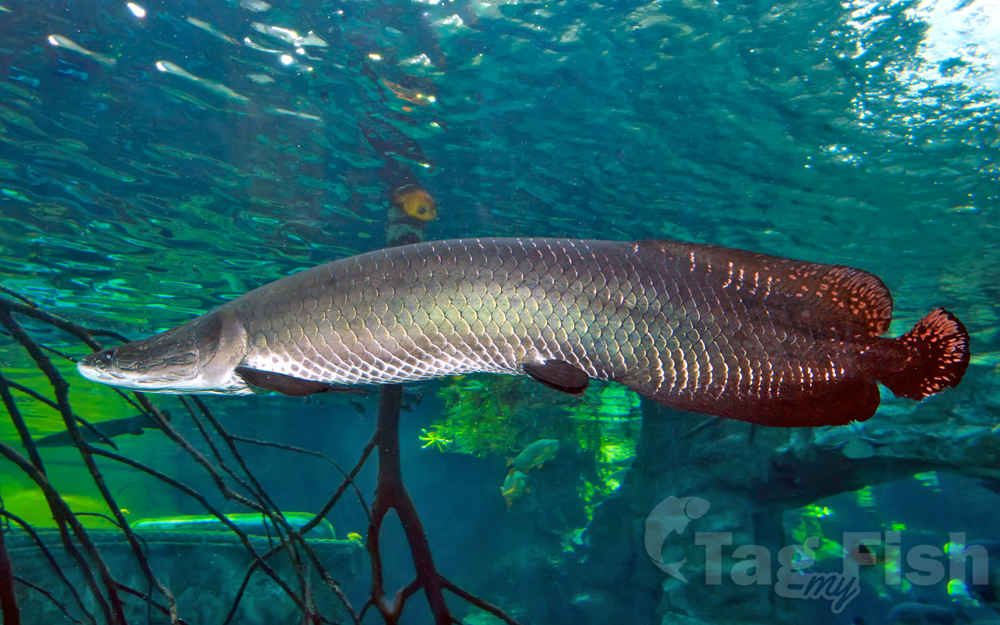Arapaima
(Arapaima gigas)

Classification
General data
Arapaima gigas, also known as pirarucu, is a species of arapaima native to the basin of the Amazon River. Once believed to be the sole species in the genus, it is among the largest freshwater fish. The species is an obligate air-breather and needs to come to the surface regularly to gulp air.
Arapaima gigas was originally regarded as the only species in the genus Arapaima, but the subsequent identification of further species, together with the rarity of specimens and the loss of several type specimens, has led to some uncertainty regarding classification within the genus and the identity of described individuals.
Description
The species is among the largest known freshwater fish, commonly measuring 200 centimetres (79 in) and reportedly exceptionally reaching lengths of up to 450 centimetres (15 ft). Adults may weigh up to 200 kilograms or 440 pounds.
A. gigas has a streamlined body with dorsal and anal fins set well back towards the tail. While the body is mainly gray to gray-green, its Brazilian local name pirarucu derives from an indigenous word for red fish, thought to refer to either the red flecks on the scales towards the tail, or the reddish-orange color of its meat. The fish have flexible armor-like scales made up of a hard mineralized outer layer and a tough-but-flexible inner layer that help protect it from attacks by piranhas.
Distribution
A. gigas is native to freshwater in the basin of the Amazon River; it is known to occur in Bolivia, Brazil, Guyana and Peru. In Bolivia, the paiche is considered an invasive species, affecting local native species and the ecosystem. It was first found in 1976 and presumably introduced from Peru being washed out of a Peruvian fish farm by a flood. The species has been introduced to parts of East Asia, both for fishing purposes and accidentally. The fish are found in flooded forest areas where they reproduce during the wet season; they relocate to lakes after water levels drop.
A 13-million-old fossil of arapaima (or very similar species) has been found in Colombia, in the Villavieja Formation, which dates from the Miocene era.
Ecology
A. gigas require breathing surface air to supplement the oxygen it derives from the use of its gills, and, as such, is dependent on surfacing every 5–15 minutes to loudly gulp air at the surface. As in other species in the genus, a modified swim bladder that contains lung-like tissue is used for this purpose.
The species primarily feeds on fish, although juveniles will prefer insects and fish larvae until fully grown. They will also consume birds, mammals, fruits and seeds on the water surface.[
Spawning occurs in lakes and river channels during the time of low water levels (August to March). After the young hatch from eggs laid in a nest constructed by both parents, the male remains to protect them for a period of about three months. The young reach sexual maturity at an age of four to five years; average life span in captivity is 15–20 years.











